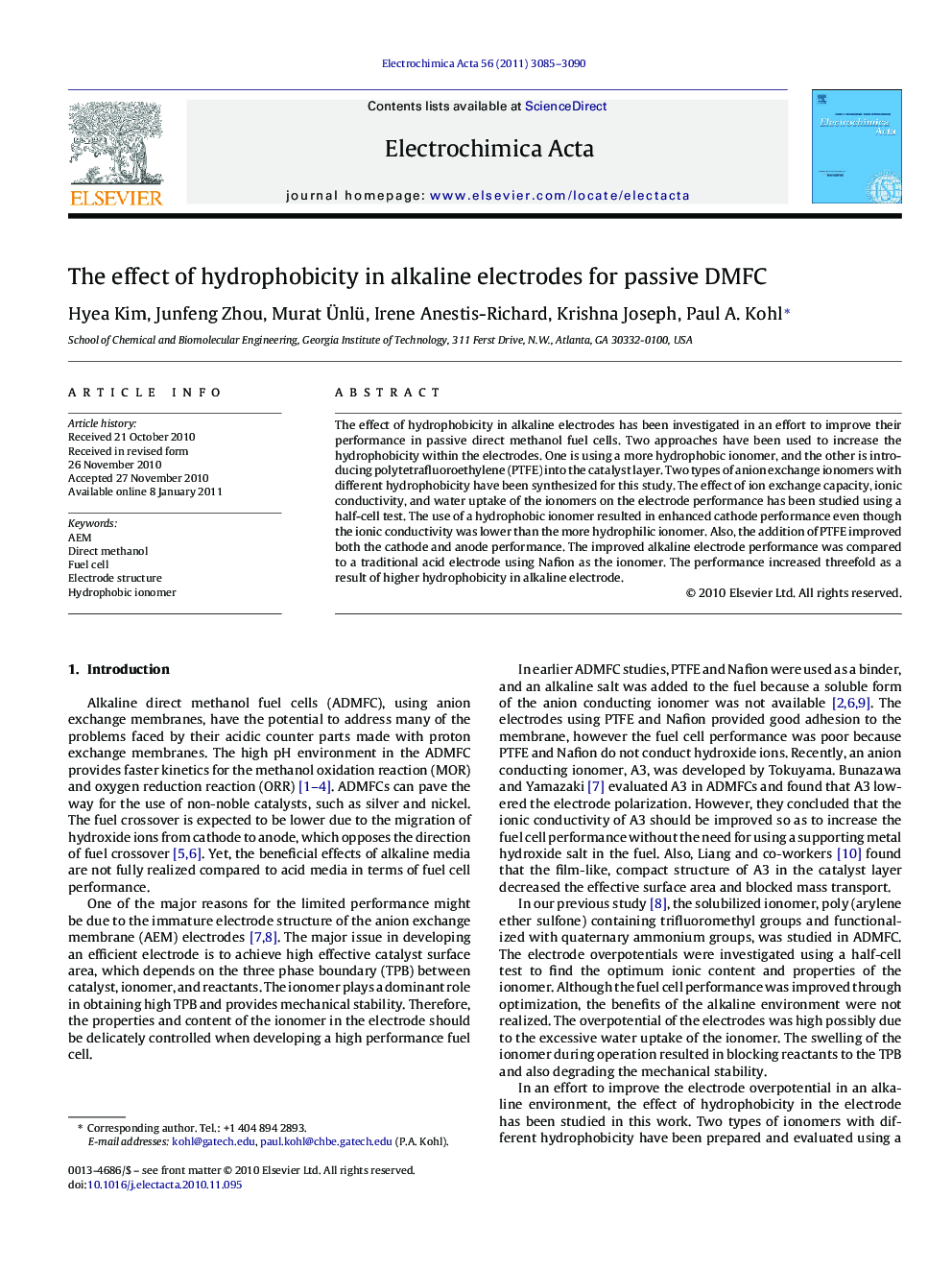| Article ID | Journal | Published Year | Pages | File Type |
|---|---|---|---|---|
| 190216 | Electrochimica Acta | 2011 | 6 Pages |
The effect of hydrophobicity in alkaline electrodes has been investigated in an effort to improve their performance in passive direct methanol fuel cells. Two approaches have been used to increase the hydrophobicity within the electrodes. One is using a more hydrophobic ionomer, and the other is introducing polytetrafluoroethylene (PTFE) into the catalyst layer. Two types of anion exchange ionomers with different hydrophobicity have been synthesized for this study. The effect of ion exchange capacity, ionic conductivity, and water uptake of the ionomers on the electrode performance has been studied using a half-cell test. The use of a hydrophobic ionomer resulted in enhanced cathode performance even though the ionic conductivity was lower than the more hydrophilic ionomer. Also, the addition of PTFE improved both the cathode and anode performance. The improved alkaline electrode performance was compared to a traditional acid electrode using Nafion as the ionomer. The performance increased threefold as a result of higher hydrophobicity in alkaline electrode.
